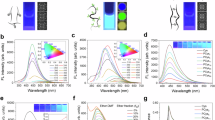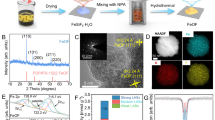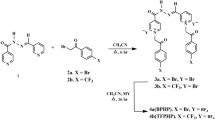Abstract
DR. M. S. MURTY has recently concluded1 on the basis of two analysed minerals that the strength of the pleochroism of orthopyroxenes of the charnoekite series can be correlated with their titanium content, it having been noted earlier2 that the pleochroism is independent of the iron content of these minerals. More recently, however, it was suggested3 that the pleochroism of orthopyroxenes can be correlated with their alumina content and with the resultant contraction of their cell parameters, that is, it may be largely a physical effect.
This is a preview of subscription content, access via your institution
Access options
Subscribe to this journal
Receive 51 print issues and online access
$199.00 per year
only $3.90 per issue
Buy this article
- Purchase on SpringerLink
- Instant access to full article PDF
Prices may be subject to local taxes which are calculated during checkout
Similar content being viewed by others
References
Murty, M. S., Nature, 202, 283 (1964).
Howie, R. A., Trans. Roy. Soc. Edin., 63, 725 (1955).
Howie, R. A., Min. Soc. Amer., Spec. Paper, 1 (I.M.A., Papers, Third Gen. Meeting), 213 (1963).
Howie, R. A., Min. Mag., 33, 903 (1964).
Author information
Authors and Affiliations
Rights and permissions
About this article
Cite this article
HOWIE, R. Pleochroism of Orthopyroxenes. Nature 204, 279 (1964). https://doi.org/10.1038/204279a0
Published:
Issue date:
DOI: https://doi.org/10.1038/204279a0



